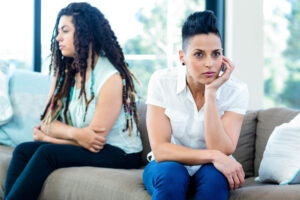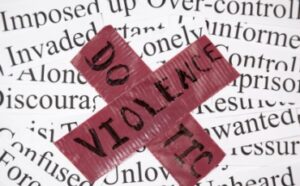In a world that celebrates diversity and strives for equality, it is essential to shed light on the issue of domestic violence within the LGBTQ community. LGBTQ domestic violence, often overlooked or misunderstood, affects individuals across the sexual orientation and gender identity spectrum. This article aims to provide a comprehensive understanding of LGBTQ domestic violence, exploring its forms, underlying factors, consequences, available support, and avenues for prevention.
Contents
- 1 Understanding LGBTQ Domestic Violence
- 2 Forms of LGBTQ Domestic Violence
- 3 Factors Contributing to LGBTQ Domestic Violence
- 4 Effects of LGBTQ Domestic Violence
- 5 Seeking Help and Support
- 6 Legal Protection and Resources
- 7 LGBTQ Domestic Violence Myths
- 8 Breaking the Cycle: Prevention and Education
- 9 Conclusion
Understanding LGBTQ Domestic Violence

Domestic violence refers to a pattern of abusive behavior used by one partner to gain power and control over another within an intimate relationship. Within the LGBTQ community, domestic violence manifests in similar ways as in heterosexual relationships but is influenced by unique dynamics and challenges.
LGBTQ individuals may face specific challenges due to societal prejudices, discrimination, and stigmatization. These challenges can exacerbate the power imbalances within relationships and contribute to the complexity of domestic violence experienced by LGBTQ individuals.
Intersectionality plays a crucial role in understanding the experiences of LGBTQ individuals facing domestic violence. The overlapping identities of race, ethnicity, socioeconomic status, and disability intersect with sexual orientation and gender identity, shaping the experiences and vulnerabilities of LGBTQ individuals within domestic violence contexts.
Forms of LGBTQ Domestic Violence
LGBTQ domestic violence encompasses various forms of abuse, including:
Physical abuse
Physical abuse involves the use of force or violence, resulting in bodily harm, pain, or impairment. This can include hitting, punching, kicking, or any other form of physical harm.
Sexual abuse
Sexual abuse involves any non-consensual sexual activity or coercion. It includes acts such as forced sexual contact, rape, or using sex as a weapon to assert power and control.
Emotional and psychological abuse
Emotional and psychological abuse aims to undermine an individual’s self-esteem and manipulate their emotions. Examples include constant criticism, humiliation, gaslighting, and isolating the victim from friends and family.
Financial abuse
Financial abuse refers to controlling or limiting a partner’s access to economic resources. This can involve withholding money, preventing employment, or sabotaging financial independence, leaving the victim financially dependent and vulnerable.
Digital abuse
Digital abuse utilizes technology to exert power and control over a partner. This can include monitoring online activities, harassment through social media or text messages, or sharing intimate or private content without consent.
Factors Contributing to LGBTQ Domestic Violence
Understanding the underlying factors contributing to LGBTQ domestic violence is crucial in addressing and preventing its occurrence. Some key factors include:
Internalized homophobia and transphobia
Internalized homophobia and transphobia can lead to self-blame, shame, and guilt, often resulting in a reluctance to report or seek help for domestic violence. Societal prejudices can also affect the perception and acceptance of LGBTQ relationships, further complicating the issue.
Heteronormative and gendered expectations
Societal expectations rooted in heteronormativity and gender norms can influence power dynamics within relationships. These expectations may shape notions of masculinity and femininity, affecting how domestic violence is perpetrated or perceived within LGBTQ relationships.
Stigma and discrimination
LGBTQ individuals already face significant stigma and discrimination, which can exacerbate their vulnerability to domestic violence. Fear of discrimination or being outed may prevent victims from seeking help or disclosing their experiences.
Power imbalances within relationships
Power imbalances can occur in any relationship, but they may be intensified in LGBTQ relationships due to factors such as financial disparities, social support networks, or varying levels of acceptance within society.
Effects of LGBTQ Domestic Violence

LGBTQ domestic violence has profound consequences for the individuals involved, as well as their families and communities. Some common effects include:
Physical and mental health consequences
LGBTQ individuals subjected to domestic violence often experience physical injuries, chronic pain, and long-term health issues. The emotional toll can lead to anxiety, depression, post-traumatic stress disorder (PTSD), and substance abuse as coping mechanisms.
Isolation and loss of support networks
Domestic violence can isolate LGBTQ individuals from their friends, families, and support networks. Perpetrators may exploit the fear of being outed or use cultural or religious beliefs to further isolate victims, leaving them without vital sources of support.
Impact on Children and Families
LGBTQ domestic violence affects not only the individuals in the relationship but also any children involved. Witnessing violence can cause long-term emotional trauma and developmental difficulties for children, further perpetuating the cycle of abuse.
Barriers to seeking help and support
Unique barriers exist for LGBTQ individuals seeking help and support. These may include concerns about confidentiality, fear of not being taken seriously, limited access to LGBTQ-friendly services, or distrust of authorities due to past experiences of discrimination.
Seeking Help and Support
Recognizing the signs of LGBTQ domestic violence and reaching out for help is crucial for breaking the cycle of abuse. Here are some steps to consider:
Recognizing the signs of LGBTQ domestic violence
Identifying the signs of domestic violence is the first step toward seeking help. This includes understanding the different forms of abuse and recognizing patterns of control, manipulation, or intimidation within a relationship.
Confidentiality and safety concerns
Confidentiality is of utmost importance for LGBTQ individuals seeking help. It is crucial to reach out to LGBTQ-friendly organizations, shelters, or helplines that prioritize the safety and confidentiality of victims.
LGBTQ-friendly support services and helplines
Numerous organizations provide specialized support for LGBTQ individuals experiencing domestic violence. These organizations offer trained professionals who understand the unique challenges faced by the LGBTQ community and can provide the necessary assistance and resources.
Importance of reaching out to trusted friends and allies
Building a network of trusted friends, family members, or allies is essential for LGBTQ individuals experiencing domestic violence. These individuals can provide emotional support, assist in safety planning, and help connect victims to appropriate resources.
Legal Protection and Resources
Legal protection and resources play a crucial role in supporting LGBTQ individuals facing domestic violence. Some important aspects to consider include:
Laws and policies addressing LGBTQ domestic violence
Many jurisdictions have specific laws and policies aimed at addressing domestic violence within the LGBTQ community. These laws seek to protect victims, hold perpetrators accountable, and ensure equal access to justice for all individuals.
Restraining orders and protection orders
Restraining orders or protection orders are legal measures that can provide immediate protection for victims of domestic violence. LGBTQ individuals can seek these orders to keep their abusers away and create a safer environment.
LGBTQ-inclusive shelters and housing options
Safe and inclusive shelters or housing options are essential for LGBTQ individuals fleeing domestic violence situations. These shelters provide a supportive environment that respects individuals’ sexual orientation and gender identity, offering refuge and assistance.
Collaborations between law enforcement and LGBTQ organizations
Collaboration between law enforcement agencies and LGBTQ organizations can enhance the response to domestic violence within the LGBTQ community. Training programs, mutual support networks, and improved reporting mechanisms are critical in fostering trust and ensuring adequate support.
LGBTQ Domestic Violence Myths

Dispelling common myths surrounding LGBTQ domestic violence is vital to increase awareness and support for victims. Let’s address some prevalent misconceptions:
Myth: Domestic violence only happens in heterosexual relationships
Domestic violence occurs in all types of relationships, including same-sex relationships and relationships involving transgender individuals. It is crucial to acknowledge and address the presence of domestic violence within the LGBTQ community.
Myth: LGBTQ individuals are less likely to experience domestic violence
LGBTQ individuals are equally susceptible to domestic violence as their heterosexual counterparts. Sexual orientation or gender identity does not exempt someone from the risk of abuse within an intimate relationship.
Myth: Violence in LGBTQ relationships is mutual and equal
Violence within LGBTQ relationships is not mutual or equal. It is essential to recognize that one partner’s power and control over the other, regardless of sexual orientation or gender identity, constitutes domestic violence.
Myth: LGBTQ domestic violence is a private matter
Domestic violence should never be regarded as a private matter. It is a societal issue that requires collective efforts to address. By speaking out and providing support, we can contribute to breaking the cycle of violence within LGBTQ relationships.
Breaking the Cycle: Prevention and Education
Breaking the cycle of LGBTQ domestic violence requires proactive prevention strategies and comprehensive education. Some key approaches include:
Comprehensive sex education and relationship programs
Integrating comprehensive sex education and relationship programs that are LGBTQ-inclusive into school curricula can help foster healthier relationship dynamics, challenge harmful stereotypes, and promote respectful behaviors from an early age.
Promoting healthy relationship dynamics
Promoting healthy relationship dynamics involves teaching and encouraging open communication, consent, and mutual respect in all types of relationships. It also includes addressing power imbalances and emphasizing the importance of equality and shared decision-making.
Addressing toxic masculinity and gender stereotypes
Challenging toxic masculinity and traditional gender roles is crucial in preventing domestic violence. By promoting positive masculinity that rejects violence and supports emotional vulnerability, we can create a culture of respect and equality.
Encouraging LGBTQ-inclusive policies and practices
Creating inclusive environments that respect and affirm LGBTQ individuals can help reduce the vulnerability to domestic violence. This involves advocating for LGBTQ-inclusive policies, such as nondiscrimination laws, and fostering acceptance and support within communities.
Conclusion
Addressing LGBTQ domestic violence requires acknowledging its existence, understanding its unique dynamics, and providing support and resources tailored to the needs of the LGBTQ community. By dispelling myths, breaking the silence, and fostering prevention and education, we can work together to build a society where all individuals, regardless of their sexual orientation or gender identity, can live free from domestic violence.
Life may sometimes be challenging for people from the LGBTQ community, but Online LGBTQ Counseling can help. Get experienced LGBTQ therapists at PrideMantra: Book a trial LGBTQ therapy session.


